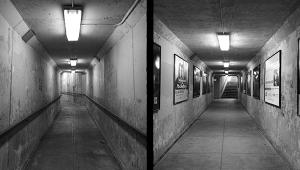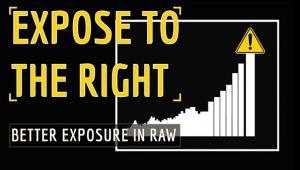Fuji X10 Compact Camera Review
The Fuji X10 offers a 4x zoom lens with manual zoom control. The zoom lens ring is also used as the On/Off switch. The photographer has to turn the zoom ring to unlock the lens and to start the camera, which we found to be a very handy feature. We also feel that manual zoom control allows for a more precise and fast adjustment of the focal length compared to the servo zooms of some other compact cameras.
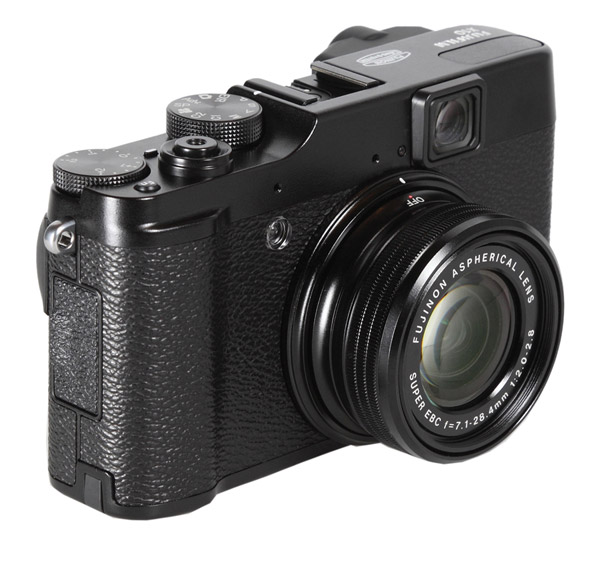


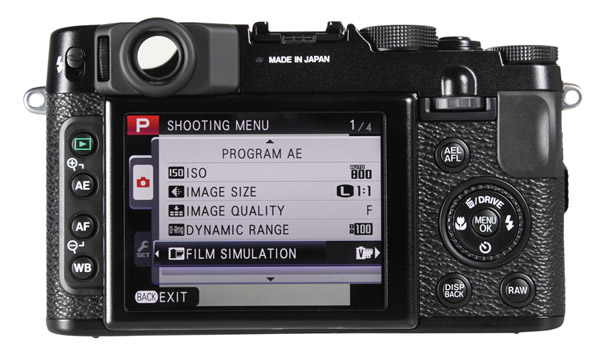
Lab results and test images by BetterNet, our TIPA-affiliated testing lab. Edited by George Schaub.
The X10 allows for a host of manual settings; this leads to many buttons and dials to set up all the parameters. The mode dial is located on the top and is where you switch between standard exposure modes, scene modes, and EXR mode, which enhances dynamic range or ISO speed with reduced noise effects. Directly beside the mode dial there’s a dial for exposure compensation in a range of +/- 3 EV. This makes for very fast correction of the reviewed image.
Another very handy function is the “RAW” button on the back (lower right). This allows for a quick change between JPEG and RAW mode without having to navigate the menu. To change image parameters the X10 has two dials—the first is located on the back and accessible by the thumb of the right hand. The second dial surrounds the four-way cursor field and is also handled with the right thumb.
The photographer has a choice of three focusing modes—single AF, continuous AF, and manual focusing. The camera uses the small parameter dial (around the four-way cursor field) for changing the focus setting in manual mode. We feel that a real lens ring would have been more comfortable.
One parameter of interest is the X10’s film simulations, which mimic the characteristics of analog films like Fujifilm Provia, Velvia, Astia, and BW film, the last with various color contrast filter effects. These choices are also available in video mode.
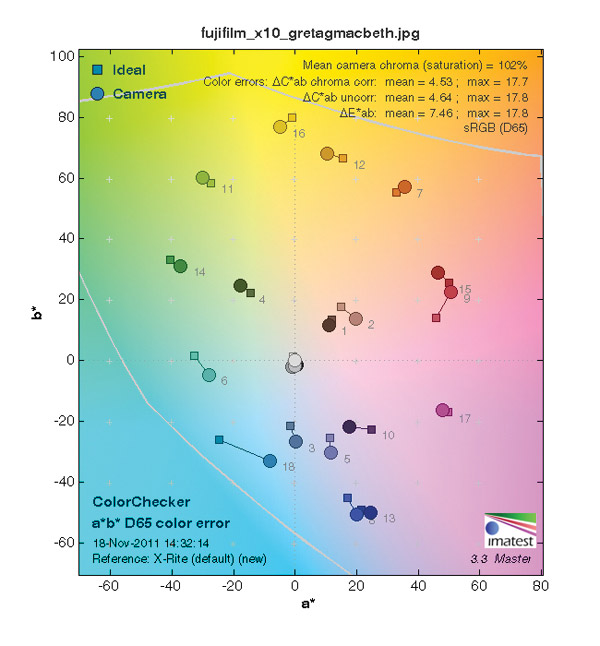


Image Quality
Color: The Fujifilm X10 reproduced the GretagMacbeth chart with a saturation of 102 percent, a very realistic color rendering. Skin tones are very fine, and only some vivid red nuances show a shift into the more orange-colored area. The automatic white balance system worked very well and showed only a little shift into the cooler color areas.
Sharpness: The camera showed good results in our resolution tests. The ISO 12,233 chart was reproduced with 2515 lines per picture height, which is an average result for a 12MP camera. The X10 boosts sharpness by an intense filtering—the overshot factor is 16.3 percent; we noticed some double contours on contrast lines. We also noticed some minor chromatic aberration effects in image corners, albeit on a very low level in the image center. Overall, the X10 produces nice and crisp looking images.
However, the demosaicing and sharpness filter might be the reason for a very particular problem we noted: when shooting images with small bright lights (candles, reflections on metal elements, headlights of cars at night) the camera sometimes shows a very uncommon blooming effect. The lights will appear as bright white, circular white dots. This effect can’t be seen in our standard test image, which you can see on the metal sphere in the center, where lights are correctly shaped as rectangular reflections. Fujifilm told us that they are working on a firmware update to reduce the “white dot” problem.
Noise: The camera showed excellent noise performance for a compact camera. The “Pixel noise” graphs are nearly exactly on the same position and the run of the curves is nearly identical throughout almost the entire ISO range, which indicates that color noise artifacts are nearly unnoticeable even in images taken at ISO 3200. That’s a very good result. The luminance noise is on an average level for a compact camera with a 12MP sensor. It keeps to a very good level up to ISO speed 1600, but you will notice some noise in all images taken with ISO 1600 or higher. Pleasingly, this noise looks a bit like analog film grain and isn’t really annoying, but does reduce sharpness and resolution a bit.
Image Tech
Image Tech is where we publish web-exclusive lab reports on cameras. To read the reports please go to the Shutterbug homepage at www.shutterbug.com and click on the Image Tech tab on the top navigation bar. New reports are published frequently, so check Image Tech for updates. The following reports are available now:
• Leica X1
• Ricoh GR Digital IV
• Nikon P7100
• Olympus E-P3
• Panasonic FZ48
• Sigma SD1
• Sony SLT-A35
• Sony NEX-C3
Scorecard
This comparative diagram can be used to compare results with other cameras in this series of BetterNet tests. Image Quality is an overall assessment of what the camera delivers, while Resolution is based on specific tests. Handling is a more subjective measure of the testers’ overall sense of how the camera would operate in the typical photographer’s hand and how responsive it would be in the field. Scope of Supply is also somewhat subjective, and is an attempt to express the value/features/benefits the camera affords.
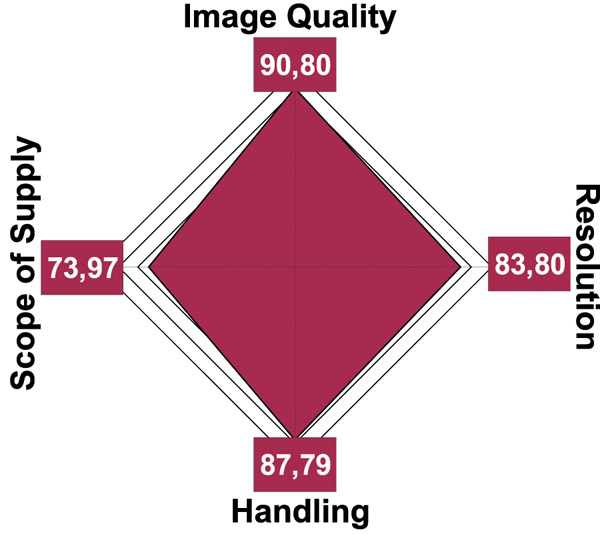
Pro
• Stylish retro design
• Large sensor compared to other compact cameras
• Compact camera with robust body; body with high-quality finish
• Nice colors, especially skin tones
• Large optical viewfinder (compared to other digital compact cameras like Canon G12 or Nikon P7100)
• A lot of handy dials, function buttons, etc.
Con
• “Wide dot/spot” problem on bright lights/reflections
• Missing focus lens ring
• Large optical viewfinder, but only 85 percent coverage


